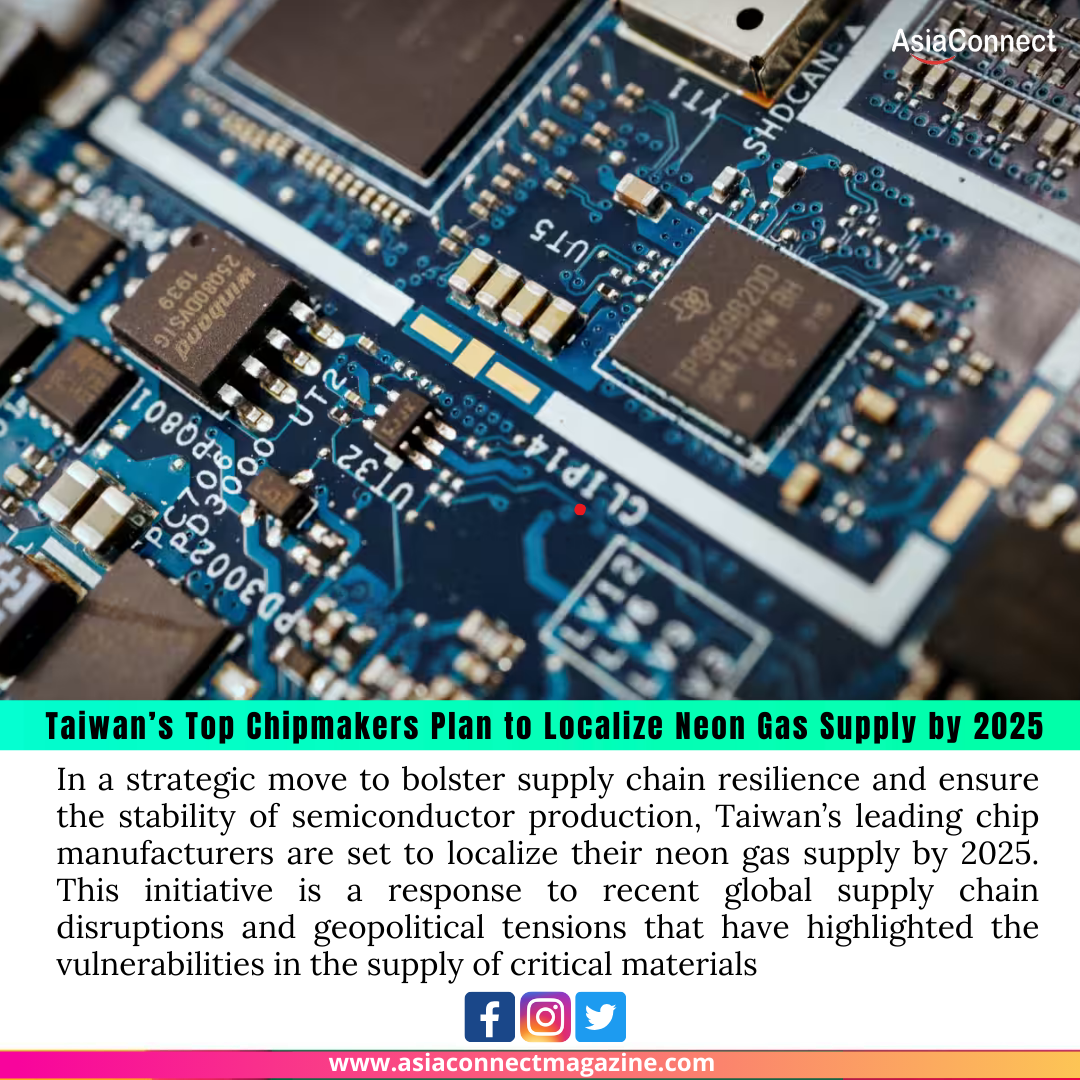In a strategic move to bolster supply chain resilience and ensure the stability of semiconductor production, Taiwan’s leading chip manufacturers are set to localize their neon gas supply by 2025. This initiative is a response to recent global supply chain disruptions and geopolitical tensions that have highlighted the vulnerabilities in the supply of critical materials essential for advanced chip manufacturing.
Neon gas, a crucial component in the production of semiconductor chips, is used in the photolithography process, which involves the exposure of semiconductor wafers to light to create intricate circuit patterns. This gas is essential for the precision required in modern chip manufacturing, and any disruption in its supply can significantly impact production timelines and costs. Traditionally, Taiwan, home to some of the world’s most advanced chipmaking facilities, has relied heavily on neon imports, particularly from Ukraine, which has been a significant supplier.
The decision to localize the neon gas supply is driven by the increasing awareness of geopolitical risks and supply chain dependencies. The ongoing conflict in Ukraine, coupled with other geopolitical uncertainties, has exposed the fragility of global supply chains. In response, Taiwan’s semiconductor giants are taking proactive measures to mitigate these risks and ensure the uninterrupted supply of this vital gas.
Taiwan Semiconductor Manufacturing Company (TSMC), the world’s largest contract chipmaker, and other major players like United Microelectronics Corporation (UMC) and MediaTek are spearheading this initiative. These companies are investing in domestic production capabilities and developing alternative sources for neon gas to reduce reliance on international suppliers.
The localization plan involves several key components:
- Investment in Domestic Production: Taiwanese chipmakers are investing in the construction of neon production facilities within the country. These facilities will be equipped with advanced technologies to extract and purify neon gas, ensuring a reliable and high-quality supply for semiconductor manufacturing.
- Strategic Partnerships: To expedite the localization process, Taiwanese companies are forging partnerships with local chemical manufacturers and technology firms. These collaborations aim to leverage existing expertise and infrastructure to accelerate the development of a domestic neon supply chain.
- Research and Development: Significant resources are being allocated to research and development efforts focused on improving the efficiency of neon gas extraction and reducing production costs. Innovations in this area are expected to enhance the overall competitiveness of Taiwan’s semiconductor industry.
- Diversification of Supply Sources: In addition to domestic production, Taiwanese chipmakers are exploring alternative sources of neon gas. This includes potential partnerships with suppliers in other regions to create a diversified and robust supply network.
The move to localize neon gas supply aligns with Taiwan’s broader strategy to strengthen its semiconductor industry’s resilience and competitiveness. As the global demand for advanced chips continues to grow, ensuring a stable and self-reliant supply chain is crucial for maintaining Taiwan’s leadership in the semiconductor sector.
The impact of this localization initiative is expected to be substantial. By reducing dependence on external sources, Taiwanese chipmakers can mitigate risks associated with geopolitical tensions and supply disruptions. This, in turn, will enhance the stability of semiconductor production and contribute to the overall growth and sustainability of the industry.
In conclusion, Taiwan’s plan to localize neon gas supply by 2025 represents a forward-thinking approach to addressing supply chain vulnerabilities in the semiconductor industry. Through investments in domestic production, strategic partnerships, and R&D efforts, Taiwan is positioning itself to secure a critical component of its chip manufacturing process. This initiative not only reinforces Taiwan’s role as a global leader in semiconductor technology but also sets a precedent for other industries facing similar supply chain challenges. As the plan unfolds, it will be closely watched by stakeholders across the semiconductor sector and beyond.





